Don't wanna be here? Send us removal request.
Text
6 notes
·
View notes
Text
Mahatma Gandhi, the quintessential example of pacifism, was an extremely racist character. His detachment from British rule came not from a sudden love of his homeland, but because the British viewed black Africans and Indians as equally inferior races. While Gandhi considered himself a superior race to African blacks. His method of non-action, of peaceful resistance, he preached it as an effective method to defeat Hitler's troops advancing throughout Europe, since according to him when German troops see that no resistance is shown to them, they will stop killing Jews and Slavs... However, years later, confronted in the conflict between India and Pakistan, he wanted to hit the Pakistani population first with atomic bombs.
His misogyny and his defense of social castes based on skin color are also well known.
“Nonviolence is an inherently privileged position in the modern context. Besides the fact that the typical pacifist is quite clearly white and middle class, pacifism as an ideology comes from a privileged context. It ignores that violence is already here; that violence is an unavoidable, structurally integral part of the current social hierarchy; and that it is people of color who are most affected by that violence. Pacifism assumes that white people who grew up in the suburbs with all their basic needs met can counsel oppressed people, many of whom are people of color, to suffer patiently under an inconceivably greater violence, until such time as the Great White Father is swayed by the movement’s demands or the pacifists achieve that legendary “critical mass”. People of color in the internal colonies of the US cannot defend themselves against police brutality or expropriate the means of survival to free themselves from economic servitude. They must wait for enough people of color who have attained more economic privilege (the “house slaves” of Malcolm X’s analysis) and conscientious white people to gather together and hold hands and sing songs. Then, they believe, change will surely come. People in Latin America must suffer patiently, like true martyrs, while white activists in the US “bear witness” and write to Congress. People in Iraq must not fight back. Only if they remain civilians will their deaths be counted and mourned by white peace activists who will, one of these days, muster a protest large enough to stop the war. Indigenous people need to wait just a little longer (say, another 500 years) under the shadow of genocide, slowly dying off on marginal lands, until -well, they’re not a priority right now, so perhaps they need to organize a demonstration or two of their own to win the attention and sympathy of the powerful… Nonviolence declares that the American Indians could have fought off Colombus, George Washington, and all the other genocidal butchers with sit-ins; that Crazy Horse, by using violent resistance, became part of the cycle of violence, and was “just as bad” as Custer. Nonviolence declares that Africans could have stopped the slave trade with hunger strikes and petitions, and that those who mutinied were as bad as their captor; that mutiny, a form of violence, led to more violence, and thus, resistance led only to more enslavement. Nonviolence refused to recognize that it can only work for privileged people, who have a status protected by violence, as the perpetrators and beneficiaries of a violent hierarchy.”
— How Nonviolence Protects the State by Peter Gelderloos (via smarmyanarchist)
434 notes
·
View notes
Text
This is not a surprise, because is not an isolated incident.
Canadian officials who met with Ukrainian unit linked to neo-Nazis feared exposure by news media: documents
A year before the meeting, Canada’s Joint Task Force Ukraine produced a briefing on the Azov Battalion, acknowledging its links to Nazi ideology.
[...]
Farber said it was also disturbing the Azov unit was able to use the Canadians in propaganda attempts to legitimize its far-right ideology. Besides its support of Nazi ideology, Azov members have been accused of war crimes and torture.
397 notes
·
View notes
Text
Maybe if the game were more realistic and included external factors such as empires, colonizers, genocidal and demo-fascist governments that try to destroy your communist country with invasions, chemical and biological attacks against the population and crops, terrorist attacks against the population and leaders of the country, creation and support of terrorist groups that bleed the country in fratricidal wars, financial attacks, pressures and economic blockades, total and constant media attacks, full fledged propaganda against your country and people, only then would you have a more realistic framework where communism would have a hard time rather be efficient.
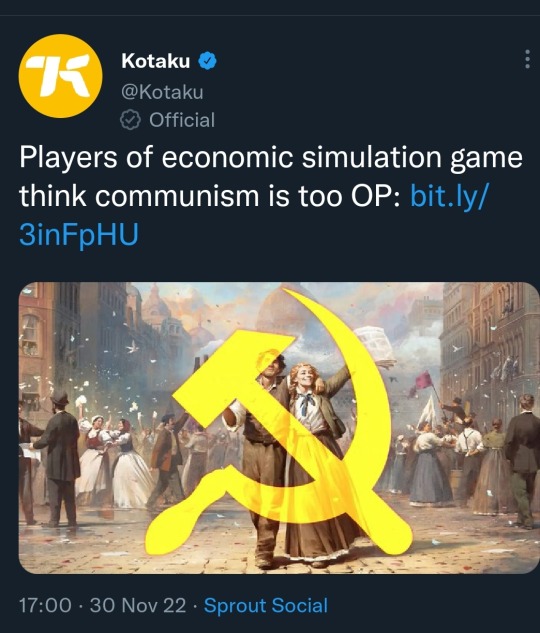
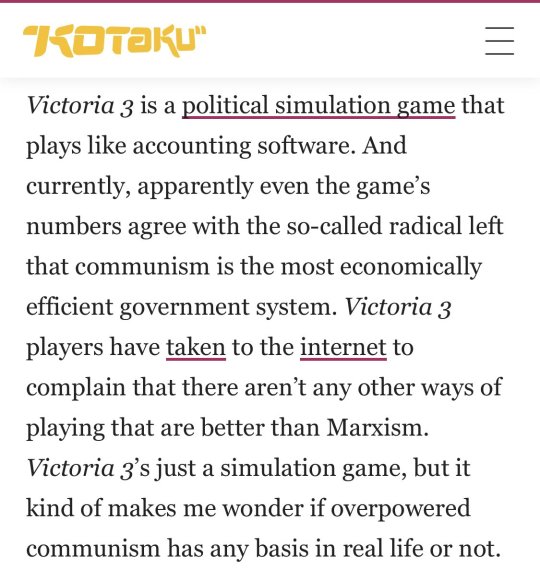
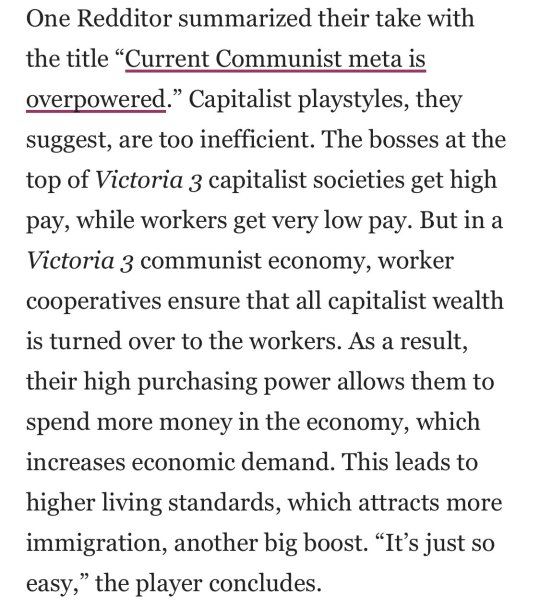
Incredible. They're so close to getting it.
98K notes
·
View notes
Photo

I see differences, for example, when I look at women. Our Nicaraguan society is machista, that’s clear. A Nicaraguan woman—like a Nicaraguan man—is lively and intelligent and has the ability to give and take. But historically, society has been much harder on us; we’ve had less opportunity. It’s a centuries-long history, a millennium of exploitation, during which we’ve carried an image of ourselves that isn’t real. But since the men in our society, for so many reasons, have been irresponsible in paternity, women have had responsibility for their children’s lives. This means that the real Nicaraguan woman isn’t the one who wants to cry in the face of her tragedy, the apathetic woman. That was clear in the struggle against the dictator. I said to Margaret Randall when she was writing about us, “Don’t write about those whom we’ve made famous. Write about the women who hid the contact bombs in their skirts, and fooled the guards with their cunning.” The majority of Nicaraguan women participated like this, and that’s how we made the revolution, with women. There’s machismo on the FSLN, of course. It would be illogical for there not to be. But in the Front women are always given the opportunity to participate. Clearly machismo goes beyond that opportunity. It’s a problem of education, and we’ve eradicated it neither in the years of struggle nor in the years of our revolution. We women have to struggle against it as well as the men. Because at times we’re more machista than they are and we educate our daughters differently from the way we educate our sons. It’s a very complicated problem. We’re on the road: men still haven’t overcome the fear that their woman will have their own lives, and they’re still not inclined to accept what I call a “woman individual,” who has responsibilities outside the home. On the other hand, women are no longer inclined to stay inside the four walls of their homes. That has meant that since the revolution there have been a lot of divorces, a lot of problems between couples. Our machismo is very deeply rooted. But I don’t believe that we have a sexist society. And that’s what there is in the United States: a sexist society, one that discriminates on the basis of sex. It has been very hard for me to adapt myself to the task of being a diplomatic representative in the United States. One thing I’ve found very difficult is protocol. I once said to Comandante Ortega that my work wouldn’t be so difficult if I could wear blue jeans at the United Nations. But I most definitely cannot! It seems such a silly thing, right? But having to dress every day in “coat and tie” is hard on me. Every time I get to Nicaragua, I put on my jeans and sit out in my patio. Diplomacy would be different if we could dress as we please, wouldn’t it?
https://www.envio.org.ni/articulo/3134
52 notes
·
View notes
Text
0 notes
Photo

On this day, 13 December 1937, the Nanjing massacre began when Imperial Japanese troops captured the city which was then the capital of China (Content note: graphic descriptions of sexual and physical violence). They then initiated six weeks of murder, looting and rape which left 40,000-300,000 people dead. Japanese media at the time covered a contest between two army officers to see who could be the first to kill 100 people with a sword. After they surpassed the figure, they began another contest to see who could kill 150. Tens of thousands of civilians and surrendered soldiers were machine-gunned and thrown in the Yangtze River, blown up with landmines, or burned or buried alive. In addition to murders, around 20,000 people – children and adult and elderly women – were raped by Japanese soldiers: many of them were gang raped, and assaulted by being penetrated with bayonets, bamboo or other foreign objects. Despite the fact that Chinese victims widely reported the atrocities, foreign eyewitnesses, Japanese participants and even Japanese generals and other officials, as well as being filmed and extensively photographed, many Japanese politicians and ultra-nationalists today try to deny that the massacre even took place. After hearing of the massacre, dockworkers in Australia refused to load pig iron onto ships delivering materials to Japan. Pic: An article on the “Contest to kill 100 people using a sword” published in the Tokyo Nichi Nichi Shimbun https://www.facebook.com/workingclasshistory/photos/a.296224173896073/2159793420872463/?type=3
166 notes
·
View notes
Text
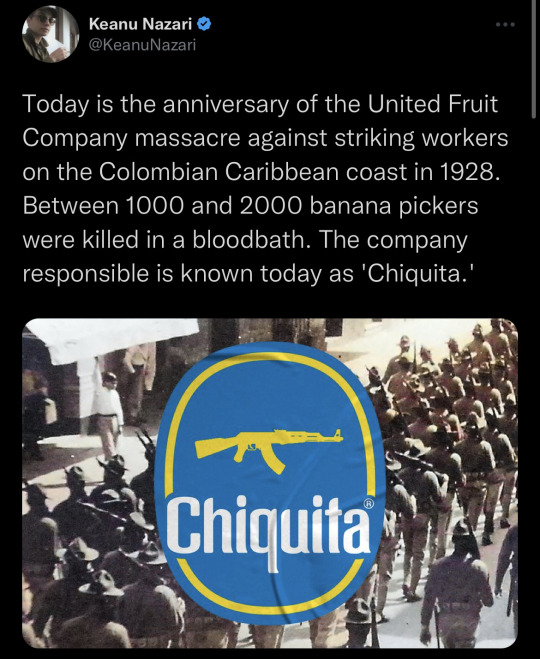
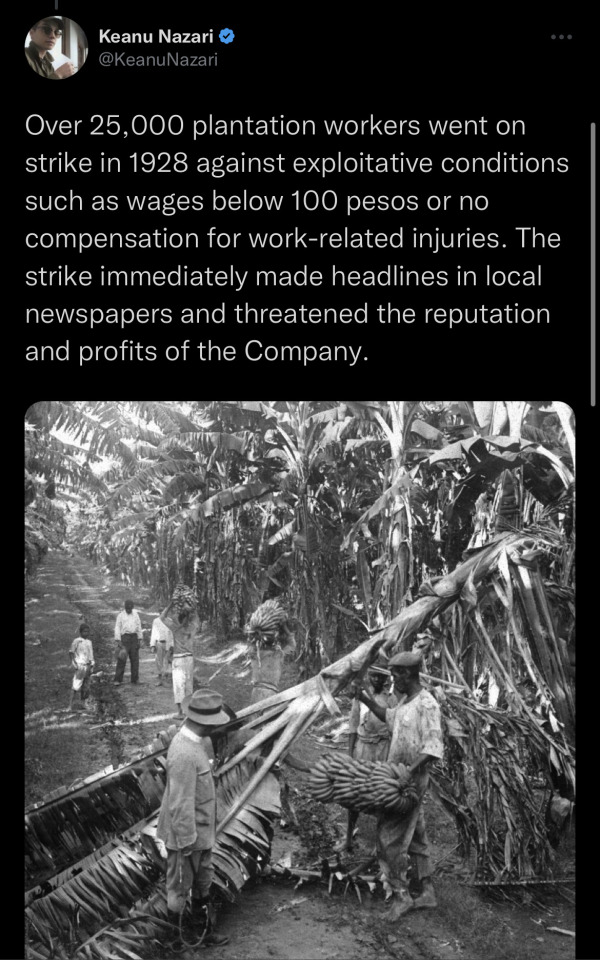
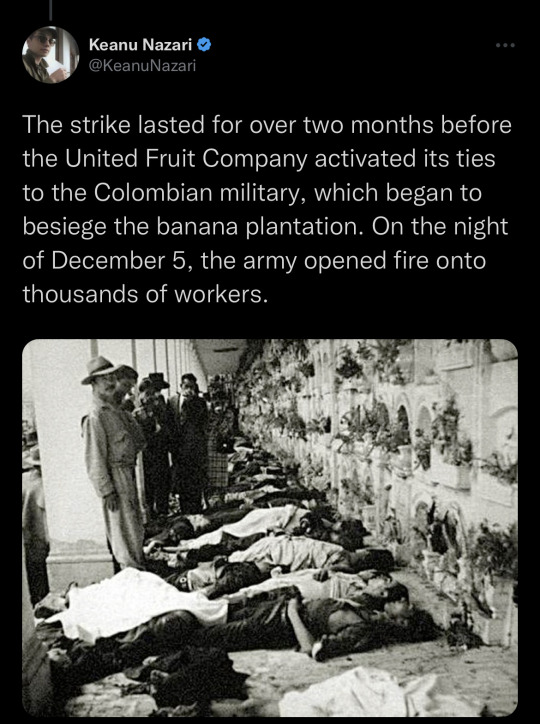
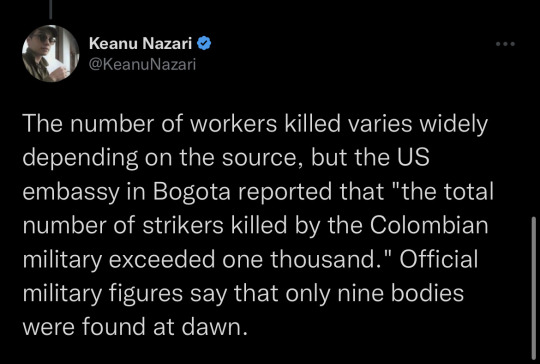
December 05 marked the anniversary of the massacre of striking workers of the United Fruit Company on the Caribbean coast of Colombia in 1928, where thousands were killed. The company responsible is known today as “Chiquita.”
19K notes
·
View notes


